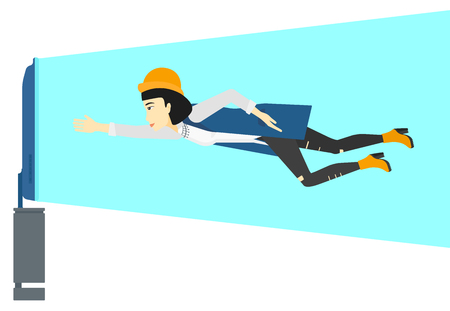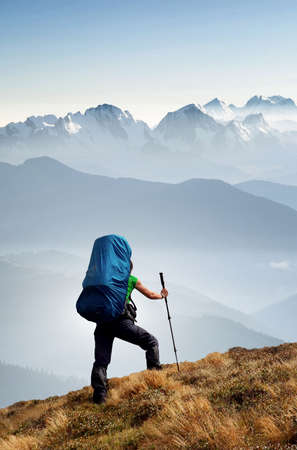Introduction to Altitude Sickness in India
Altitude sickness, locally known as mountain sickness or “chadhai ki bimari”, is a serious concern for travellers exploring the majestic heights of India’s northern frontiers. With the increasing popularity of adventure travel and trekking holidays among Indian youth and families, destinations such as Ladakh, Spiti Valley, and various regions of Himachal Pradesh—including Manali-Leh Highway and Rohtang Pass—have become go-to spots for both seasoned trekkers and first-time mountain visitors. The allure of these high-altitude destinations, with their snow-capped peaks, pristine lakes like Pangong Tso, and monasteries perched atop remote hills, brings thousands every year from metros like Delhi, Mumbai, and Bangalore. However, many are unaware that ascending too quickly to these elevations can lead to potentially life-threatening conditions collectively known as altitude sickness. Given the growing trend of travel to high altitudes within India, understanding the stages of altitude sickness—Acute Mountain Sickness (AMS), High Altitude Cerebral Edema (HACE), and High Altitude Pulmonary Edema (HAPE)—is not just relevant but crucial for anyone planning a Himalayan journey. This article will provide a contextual overview tailored to Indian travellers, highlighting unique challenges faced in our local terrain and sharing practical insights for safer adventures in our own backyard.
2. Understanding AMS, HACE, and HAPE
When we talk about altitude sickness in India, especially for those travelling to places like Ladakh, Spiti, or the Himalayan treks in Uttarakhand and Sikkim, it is important to understand three main stages: Acute Mountain Sickness (AMS), High-Altitude Cerebral Oedema (HACE), and High-Altitude Pulmonary Oedema (HAPE). Let’s break down these terms in a simple way, using examples that make sense for us in our Indian context.
Acute Mountain Sickness (AMS)
Imagine you are going from Delhi to Leh by road or flight. Suddenly, you are at an altitude much higher than before. Your body feels like it has reached the top floor by climbing stairs too fast—breathless, head spinning, and tired. This is AMS. It is the most common and earliest stage of altitude sickness. Symptoms can include headache, nausea, dizziness, and feeling very tired—like after walking barefoot on a hot day during a yatra without enough water.
High-Altitude Cerebral Oedema (HACE)
If AMS is ignored and you keep pushing yourself—just like ignoring a fever during exam season—AMS can turn severe and affect your brain. HACE is when the brain swells due to lack of oxygen. You may start acting confused, have trouble walking straight (like after spinning around in Holi celebrations), or even lose consciousness. This stage is serious and needs immediate medical help.
High-Altitude Pulmonary Oedema (HAPE)
On the other hand, if the lack of oxygen affects your lungs instead of your brain, it leads to HAPE. Think of it as your lungs getting flooded just like Mumbai streets during monsoon—making it hard to breathe, causing cough with frothy spit, chest pain, and extreme weakness. HAPE can happen quickly and is also life-threatening if not treated right away.
Comparison Table: Stages of Altitude Sickness
| Stage | Main Organ Affected | Common Symptoms | Indian Analogy |
|---|---|---|---|
| AMS | Whole Body | Headache, nausea, fatigue | Like exhaustion after a long train journey without rest |
| HACE | Brain | Confusion, clumsiness, loss of consciousness | Like feeling dizzy after heatstroke during summer vacation |
| HAPE | Lungs | Breathlessness, cough with froth, chest pain | Like struggling to breathe in heavy pollution or smoky Diwali night |
Key Takeaway for Indian Travellers:
If you feel unwell at high altitude—even if symptoms seem mild—treat it seriously. Just as you wouldn’t ignore fever during dengue season or stomach upset during a trip to Varanasi, don’t ignore AMS signs in the mountains. Recognising these stages early can save lives during your next Himalayan adventure.

3. Common Signs and Local Experiences
When Indian trekkers venture into the high altitudes of the Himalayas, they often face symptoms that are both universal and uniquely observed in our local context. The most common early sign is a nagging headache, which many describe as “dull pain like after a long bus ride on winding mountain roads.” Seasoned guides from Uttarakhand and Ladakh often note that trekkers start feeling unusually tired, saying, “Pahadi hawa lag rahi hai” (the mountain air is hitting me). Nausea, loss of appetite, and dizziness are typical complaints—sometimes brushed off initially as just “gas trouble” or “stomach upset” due to spicy trail food. Local guides share that trekkers may feel breathless even while doing simple tasks, like zipping up their tent or walking to fetch chai water. A key sign often mentioned by experienced porters is disturbed sleep; trekkers toss and turn and wake up frequently at night, something locals call “altitude ka nasha.” As AMS progresses to more severe stages like HACE or HAPE, symptoms such as confusion (“not able to count my parathas”), stumbling walk, persistent cough, and chest tightness become serious red flags. Guides from Manali emphasize watching for any trekker who seems confused or slow to respond—“If someone forgets their own name or is talking about going home to Delhi in the middle of the night, it’s time to act fast.” Recognizing these signs early and listening to local wisdom can be life-saving in the rugged Indian Himalayas.
4. Cultural Beliefs and Home Remedies
Across the Indian Himalayas, altitude sickness is not just a medical condition but also a subject woven with cultural beliefs and traditional wisdom. Among trekkers and local villagers, especially in regions like Ladakh, Uttarakhand, Sikkim, and Himachal Pradesh, time-honoured remedies are often the first line of defense before turning to modern medicine. While some practices offer comfort or minor relief, it’s important to distinguish myths from facts when dealing with Acute Mountain Sickness (AMS), High Altitude Cerebral Edema (HACE), and High Altitude Pulmonary Edema (HAPE).
Common Traditional Remedies Used in India
| Remedy | Region | Believed Benefit | Medical Fact |
|---|---|---|---|
| Garlic Soup (Lahsun ka Ras) | Ladakh, Spiti | Improves blood circulation and helps breathing at high altitude | No scientific evidence for AMS prevention; may provide warmth and comfort only |
| Ginger Chai (Adrak Wali Chai) | All Himalayan states | Reduces nausea and keeps body warm | Can soothe mild nausea; does not prevent or treat AMS/HACE/HAPE |
| Tibetan Butter Tea (Po Cha) | Ladakh, Sikkim | Keeps the body hydrated and energetic | Provides calories but does not address oxygen deprivation of altitude illness |
| Coca Leaves (Chewing or Tea) | Nepal border areas (less common in India) | Traditionally used for energy and altitude adaptation | Banned in India; no proven effect on AMS prevention or treatment |
| Ayurvedic Herbs (e.g., Ashwagandha, Shilajit) | Pahadi communities across North India | Boosts stamina and reduces fatigue at high altitudes | No robust clinical evidence for use against AMS, HACE, or HAPE |
Myths vs Medical Facts: What Should Trekkers Know?
Cultural beliefs are deeply respected in Indian mountain communities, but for trekkers—whether Indian or foreign—it’s essential to rely on proven preventive methods. Myths such as “garlic soup prevents all high-altitude problems” can lead to dangerous delays in seeking proper care. While home remedies like ginger chai can ease mild discomforts such as headache or nausea, they do not replace acclimatization protocols or emergency descent if symptoms worsen.
The Role of Traditional Knowledge in Modern Trekking Culture
Despite their limitations, traditional remedies play a supportive role by providing psychological comfort and helping trekkers bond with local hosts. Sharing a cup of garlic soup or ginger chai can be a culturally enriching experience. However, every trekker should know that these practices are supplementary at best. For any sign of severe altitude sickness—such as confusion, breathlessness at rest, or persistent vomiting—immediate medical attention is crucial.
5. Prevention Strategies for Indian Trekkers
Practical Tips for Safe Ascent
For Indian trekkers and pilgrims heading to the Himalayas or other high-altitude regions, prevention of altitude sickness is always better than cure. One golden rule is to ascend slowly—ideally, not more than 300-500 metres per day once above 2,500m. Take a rest day every 2-3 days to let your body acclimatise. Hydration is key; sip water regularly even if you don’t feel thirsty, and avoid alcohol and smoking as they worsen dehydration and reduce oxygen intake.
Acclimatisation Advice Tailored for India
In India, the culture of yatra (pilgrimage) often means trekking with groups, sometimes at a rapid pace due to tight schedules. However, it’s important to listen to your body and communicate with your group if you need to slow down. If possible, spend a night at a mid-altitude base like Rishikesh or Joshimath before heading higher. Use ‘climb high, sleep low’ techniques: trek to a higher elevation during the day but return to sleep at a lower camp. Pay attention to early symptoms of AMS—headache, nausea, tiredness—and don’t hesitate to descend if these appear.
Indian Foods that Help at High Altitude
Many traditional Indian foods are naturally suited for altitude adaptation. Warm soups like dal (lentil soup), khichdi (rice and lentils), and light sabzi (vegetable curry) provide easy-to-digest energy and hydration. Ginger tea or tulsi chai help reduce nausea and keep you warm in the cold Himalayan climate. Avoid heavy fried foods and stick to simple meals with rice, roti, or boiled potatoes which are gentle on the stomach. Carrying dry fruits like almonds, raisins, or chikki (peanut brittle) gives quick energy without causing heaviness.
Community Practices on Yatra Routes
On popular yatra routes such as Kedarnath, Amarnath, or Hemkund Sahib, local communities have developed their own prevention practices over generations. Pilgrims often stop at langars (community kitchens) for free hot meals and chai—take advantage of these breaks for nutrition and rest. Locals recommend starting treks early in the morning when oxygen levels are relatively higher. Many yatris (pilgrims) use natural remedies like garlic pods or camphor tied in handkerchiefs for easier breathing—while not scientifically proven, these practices can offer comfort and psychological support.
Stay Informed and Travel Together
Finally, always check weather updates from reliable sources before heading out. Register your journey with local authorities when possible and stick together with your group. In case of emergency symptoms—severe headache, breathlessness at rest, confusion—descend immediately and seek help from local medical posts or yatri camps. Remember: in the mountains, safety comes first.
6. Emergency Response and Medical Support in Indian Terrain
When trekking or travelling at high altitudes in India—be it the Himalayas, Ladakh, Sikkim, or Arunachal Pradesh—the risk of altitude sickness can quickly escalate from mild AMS to life-threatening HACE or HAPE. Recognising emergencies early and knowing how to respond in remote Indian routes is critical for survival.
Recognising Medical Emergencies
In the Indian context, symptoms such as severe headache, confusion, loss of balance, breathlessness even at rest, bluish lips or nails, and inability to walk straight must be treated as red flags. Immediate descent is non-negotiable if these signs appear. Unlike popular Western treks with frequent rescue services, Indian trails may have limited connectivity and support; thus, awareness among trekkers and group leaders is vital.
Accessing Help on Remote Routes
Mobile networks are patchy beyond places like Manali or Leh. In most high-altitude regions—such as Zanskar, Spiti, or the Valley of Flowers—satellite phones may be the only option for external communication. It’s advisable to register your trek with local authorities like the Indian Mountaineering Foundation (IMF) or state tourism boards who can coordinate search-and-rescue operations if required. Always carry emergency contacts for district hospitals and local police stations written down—not just saved in your mobile.
The Role of Local Support Teams
Local guides and porters are invaluable. Most have practical knowledge of AMS symptoms and traditional first aid measures. Many tour operators in Himachal Pradesh and Uttarakhand equip their staff with basic medical training and oxygen cylinders. These local teams can guide emergency descents to safer altitudes or help arrange transport on short notice—even by pony or stretcher if needed.
Government-Run Health Posts
The Ministry of Health & Family Welfare has set up Primary Health Centres (PHCs) in many remote villages along popular trekking routes like Roopkund or Kedarnath. Some high-traffic zones (e.g., Sonamarg in Kashmir, Pangong region in Ladakh) have Army-run medical camps during tourist season. These posts often provide basic treatment for AMS, oxygen supply, and advice on further evacuation when necessary.
Key Tips for Travellers
– Always inform someone reliable about your route and schedule.
– Carry a portable pulse oximeter and basic medication (acetazolamide, dexamethasone if prescribed).
– Listen to your body: don’t ignore persistent symptoms.
– Respect local advice—often, villagers know the terrain hazards best.
– Consider travel insurance that covers high-altitude evacuation within India.
Ultimately, while the majestic heights of India offer adventure and spiritual solace, preparedness and respect for the mountain environment ensure a safe journey amidst unpredictable terrain.
7. Conclusion: Safe High-Altitude Exploration in India
As more adventurers from across India and the world set their sights on our majestic Himalayas, Ladakh, Sikkim, Uttarakhand, and other high-altitude regions, understanding altitude sickness—AMS, HACE, and HAPE—becomes absolutely crucial. Awareness is the first step toward prevention. Recognising early symptoms and respecting your own limits can make all the difference between a memorable journey and a medical emergency.
The Value of Knowledge
Indian travellers are increasingly blending local wisdom with scientific knowledge. From sipping on hot chai at mountain dhabas to acclimatising slowly as recommended by seasoned sherpas and guides, these practices are rooted in generations of experience. When you combine this traditional wisdom with modern tools like portable pulse oximeters, emergency medicines, and timely evacuation plans, the risks drop significantly.
Cultural Respect and Preparedness
Many Indian communities living in high-altitude areas have developed unique cultural habits for coping with thin air—such as pacing one’s trek or using herbal remedies like garlic soup (“lahsun ka ras”). Listening to local advice and respecting rituals not only enriches your journey but also enhances safety.
Empowerment Through Education
Whether you are a solo backpacker heading to Roopkund, a biker crossing Khardung La, or a family visiting Vaishno Devi or Amarnath Yatra, being informed about AMS, HACE, and HAPE empowers you to act swiftly if symptoms arise. Sharing your knowledge with fellow travellers also builds a community of responsible explorers.
In summary, safe exploration of Indias breathtaking high-altitude destinations relies on a balanced approach—honouring age-old practices while embracing modern medicine. With awareness and preparation, every mountain adventure can be both safe and unforgettable.


